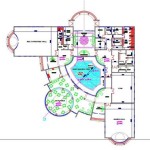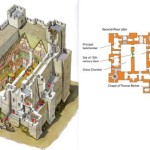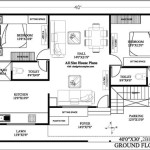Floating Mallard Duck House Plans: Providing a Safe and Natural Habitat for Your Feathered Friends
Mallard ducks, known for their vibrant green heads and distinctive quacking, are a common sight in ponds, lakes, and wetlands. If you're a duck enthusiast or simply want to attract these beautiful creatures to your backyard, building a floating mallard duck house can be a rewarding and enjoyable experience. Here's a step-by-step guide to help you create a cozy and secure home for your feathered friends:Materials Required:
1. Wood (such as plywood or cedar) 2. Nails or screws 3. Saw 4. Hammer or drill 5. Paint (optional) 6. Hinges 7. Door handle 8. Waterproof sealant 9. Straw or wood shavings for bedding 10. Food and water containersStep 1: Design and Cut the Wood
Begin by designing the duck house based on the desired size and shape. Common dimensions for a mallard duck house are approximately 2 feet wide, 2 feet deep, and 2 feet tall. Cut the wood pieces according to the design using a saw.Step 2: Assemble the Duck House
Assemble the duck house by attaching the wood pieces together using nails or screws. Ensure that the joints are secure and sturdy. Leave one side open to serve as the entrance.Step 3: Install the Hinged Door
Attach hinges to the open side of the duck house and install a door. This will allow you to easily access the inside of the house for cleaning and maintenance. Add a door handle for convenience.Step 4: Apply Waterproof Sealant
To protect the duck house from water damage, apply a waterproof sealant to all surfaces. This will help prevent rot and extend the lifespan of the structure.Step 5: Add Bedding and Amenities
Place a layer of straw or wood shavings inside the duck house to provide a comfortable and warm bedding area for the ducks. Install food and water containers, ensuring they're easily accessible and won't tip over. You can also add a perch for the ducks to rest on.Step 6: Float the Duck House
Place the completed duck house in a suitable location in your pond or lake. Make sure it's anchored securely to prevent it from drifting away. The house should be positioned in a calm area with plenty of shade and protection from predators.Step 7: Attract Mallard Ducks
To attract mallard ducks to your floating duck house, provide a regular supply of food and water. Scatter duck feed around the house and keep the water fresh. You can also plant aquatic plants around the house to provide cover and a natural habitat for the ducks.Conclusion:
Building a floating mallard duck house is a fun and rewarding project that can provide a safe and natural habitat for these beautiful birds. By following these simple steps, you can create a cozy home for your feathered friends and enjoy watching them thrive in their new environment. Remember to keep the house clean and well-maintained to ensure the ducks' comfort and well-being.
How To Build A Floating Duck House In 2024 Diy Plans

Floating Duck House Woodworking Talk

The Lonely Duck House Farmgirl Bloggers

Hartland Duck Canopy House Backyard Ducks Plans

The Lonely Duck House Farmgirl Bloggers

Pin By Aquablue On Pets Their Habitats And Hiding Places Duck House Plans Cute En Coops

Aqua Duck Floating Bird House Yard Envy

Building A Floating Duck House With The Harbor Freight Sawmill

How To Make A Duck House The Cape Coop

Hen Houses Delta Waterfowl








